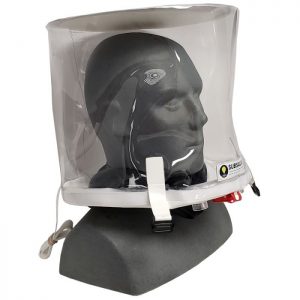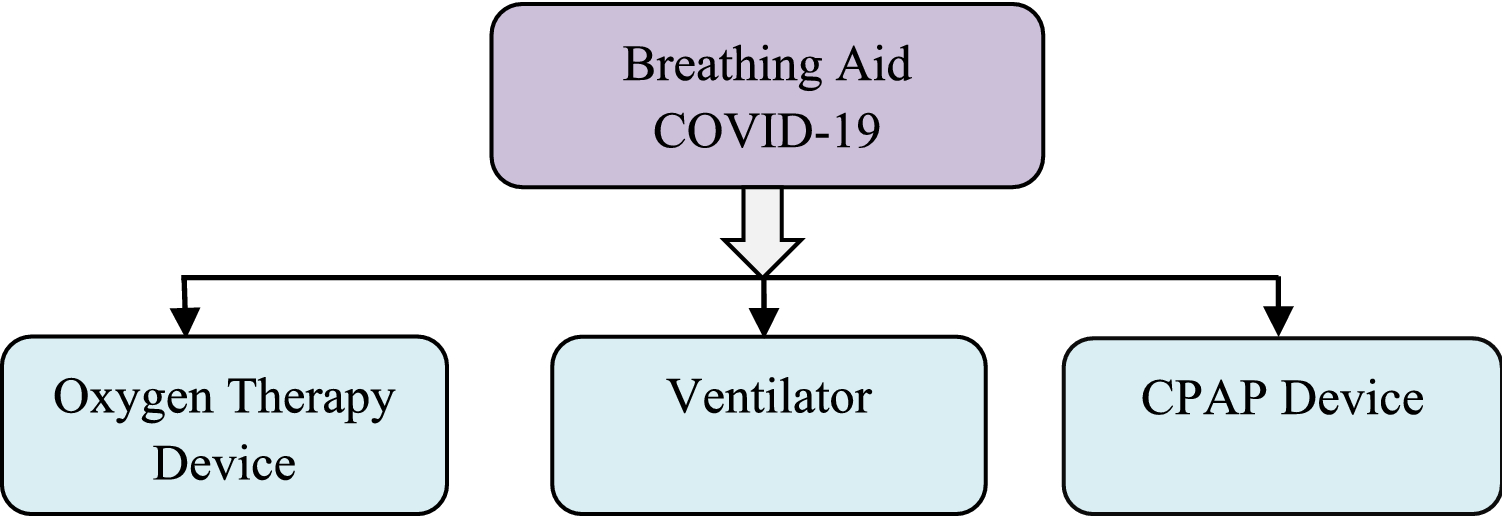Why should you consider helmet based ventilation (Helmet CPAP, Helmet NIV) for management of Covid-19 related respiratory distress? Let’s review some history and a summary of benefits…
At the start of the Covid-19 pandemic, some very striking images circulated throughout the media of helmet ventilation techniques being used in Italy – full rooms of patients wearing these bubble-helmets caught global attention for a very, very brief split second of air time, and it also caught mine. With some research, I made the connection that very similar helmets, or ‘hoods’, were used in the hyperbaric medicine community (within my normal operating space), though with a different technique. As it happened, use of the helmet based ventilation technique for treating respiratory distress in the US was only carried out off-label, since there were no FDA approved helmets within the US medical device market.
The literature all points to the technique being an effective breathing aid for Covid-19 related respiratory distress. In its simplest presentation, we can treat with oxygen (non-invasive), with pressure (non-invasive CPAP), or with both (termed a ‘ventilator’ be it invasive or non-invasive). As a simple patient interface, helmets (or ‘hoods’) afford numerous benefits for non-invasive techniques and afford the very best benefits of both oxygen and CPAP therapy.
In my line of work, breathing is everything so this became personal – with some encouragement and voiced interest from the medical community, our team very quickly prototyped, refined, established production, and gained FDA Emergency Use Authorization (EUA) for the Subsalve Oxygen Treatment Hood. While the technique remains very new here in the US and will take time for protocols to be embedded within respiratory distress patient care algorithms, there is an urgent and imminent benefit to using the technique within the aid sector, particularly in low and middle income communities (LMICs) that are going to continue to suffer from this horrific pandemic.
Let’s explore some well proven benefits:
- 1. Positive pressure, or PEEP, can be delivered to the patient non-invasively (no invasive ventilators requiring intubation). Positive pressure helps with alveolar recruitment, making it easier to breathe, and consequently easier for the body to absorb oxygen from the breathing air – this is basic human physiology at work. At the start of the pandemic, CPAP devices (continuous positive airway pressure) were given strong consideration as an emergency resource with the scare of a ventilator shortage, but fell by the wayside given the concern over aerosolizing the virus and exposing healthcare workers. CPAP devices and their more capable counterpart, BiPAP devices, range in cost and complexity, but in their simplest form they’re used everyday, even at home, to ease respiratory distress for a wide range of conditions. In response to the pandemic Nanotronics Health of Brooklyn New York developed and launched the ‘nHale’ device, which is an incredibly cost-effective non-invasive ventilator that supports both CPAP and BiPAP delivery, and it’s proven effective – it was inspired by Nanotronics’ CEO Matthew Putman self-treating his Covid-19 experience with home CPAP and seeing immediate relief. Our team has coupled the nHale with the Subsalve Oxygen Treatment Hood to offer a turn-key system that affords CPAP benefits while eliminating the scare of virus aerosolization – treats the patients, and protects the healthcare workers – win, win.
- 2. The use of helmets/hoods with a filter at the expiratory limb substantially contains the spread of the virus within the healthcare setting. This makes high flow/CPAP treatments more palatable, and most importantly – it means these high flow techniques can reduce costs in many hospitals that have relied on negative pressure suites for containment. The combination of a negative pressure suite, plus huge amounts of PPE consumables is very costly and we’ve already seen the chaotic scramble for PPE during pandemic peaks. Helmets/hoods substantially reduce the problem at its source – the patient’s exhalations. In environments where negative pressure suites just don’t exist, and won’t exist given cost or logistics constraints, hoods are the ticket.
- 3. Variable oxygen fractions can be delivered. Today, there is huge emphasis on oxygen shortages globally. Yes, this is a problem, but I stand by a common sense sentiment that we need to follow the physiology. High flow oxygen delivery has been viewed as the go-to treatment to ‘buy time’ in LMICs to desperately triage hospital resources. Well, the world is missing the picture to some extent. First, some oxygen is better than no oxygen. 100% oxygen delivery is not always available in copious volumes, so use 90%, or heck use 50% – we know from multiple industries (my own included) that these also offer therapeutic benefit. By titrating oxygen in to air flow from CPAP machines or other sources, the patient sees both the benefit of oxygen, AND positive pressure. Let’s use some logic – the convention thus far has been to apply cheap oxygen masks for a period of time, then when the patients fail, they’re intubated. Intubation delivers pressure [and oxygen]. Well, with hoods we can deliver pressure EARLY, without intubation, and supplement it with available oxygen. This is already proven to reduce required intubations by 20-50% in multiple studies. That means huge cost savings to the healthcare system, and lots and lots of lives saved. The mechanisms of delivering helmet ventilation should not be confused however – the literature points to use of the helmet interface with any number of flow sources (ventilators, CPAP, BiPAP, venturi, High flow blenders, etc) which is substantially irrelevant. Flow is flow, pressure is pressure, and oxygen is oxygen. Each technique has its limitations, but speaks to the versatility of the interface and makes the technique universally applicable across a range of available resources. In the past few months, we developed a very simple venturi device which entrains room air to deliver high flow using only limited supplies of oxygen. This is one technique that allows for pneumatic delivery of treatment when reliable electricity may not be available – this is the technique used at scale in Italy, and it makes good sense. In the most dire of circumstances, tens or more hoods can deliver CPAP therapy using a hardware store compressor with appropriately regulated airflows.
- 4. Patient comfort and tolerance. Oronasal style masks have to be wrenched tight to get a good seal on the patient’s face – this causes sores over long periods of time, and can make it difficult to interact with the patient for a wellness check. By contrast, the hoods seal at the neck with a gentle elastic seal and the face is visible. This neck seal style is used in multiple industries for long term use – I’ve personally worn suits with the very same seals for well over 10 continuous hours. Despite being in a bubble, patients report this being less claustrophobic than wearing a mask since nothing is tight fit to the face, the high flow is actually refreshing, and there is still the ability to speak freely. Being able to deliver pressure and supplemental oxygen for hours to days VERY EARLY with the onset of respiratory symptoms can afford enough relief and improvement to ward of progression to the more invasive measures which we all want to avoid.
- 5. It’s an inexpensive solution that can, should, and will disrupt the Covid-19 treatment paradigm. The simple solutions are often overlooked, which seems to be the case here. Complete systems are available from $150 to $1000, requiring nothing more than electricity and/or an oxygen supply. By contrast, a single ventilator can cost $20,000 or more, plus significant investments into training for proper use, and the cost of keeping the patient sedated for a lengthy period of time. I’ll ask rhetorically, if we can avoid this massive expense which often doesn’t end well, and afford a beneficial treatment proactively that buffers the burden on the healthcare system altogether, then why not?
As of this writing, this technique has proven effective, but remains overlooked for widespread adoption, in part due to lack of visibility and awareness. To win this fight we need to get ahead with proactive preparedness in areas that are resource limited, and don’t wait – treat early. Helmet ventilation is a simple but very powerful tool in the toolbox. With some common sense attention paid to safety and only remedial instruction, tens or even hundreds of thousands of lives can be saved. We at Ocean Opportunity, and our partners, are committed to doing our part…
What can you do? Well, #helpushelp #beatcovid19 with any level of donation to boost awareness of the technique, and spread the word. Together with a number of partners, and thanks to grassroots initiatives, we’ve been able to place systems in multiple countries and have seen and heard positive results…this is just the beginning. Please get in touch – together we can make a huge impact.
Resources
- Purchase hoods and kitted systems | www.oxygentreatmenthoods.com
- Clinician Co-pilot from Ambifi | How to Use the Subsalve Hood for Treatment
- Mfg of the Subsave Hood | www.subsalve.com
- Mfg of the nHale | www.nanotronicshealth.com
- I’m not a medical professional, but want to help | Donate Today



